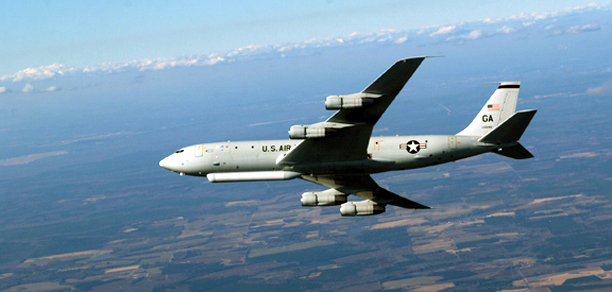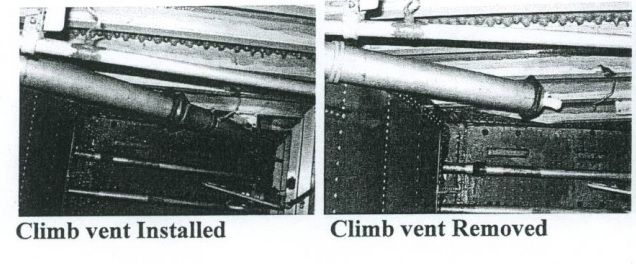Original post courtesy of Aerossurance.com
The Incident
On 13 March 2009 USAF Northrop Grumman E-8C JSTARS 93-0597 (a heavily modified Boeing 707-300 surveillance aircraft) was in the process of refuelling from a KC-135T tanker according to a USAF Accident Investigation Board.

FILE PHOTO — The E-8C Joint Surveillance Target Attack Radar System is a joint Air Force – Army program. The Joint STARS uses a multi-mode side looking radar to detect, track, and classify moving ground vehicles in all conditions deep behind enemy lines. The aircraft is the only airborne platform in operation that can maintain realtime surveillance over a corps-sized area of the battlefield. (U.S. Air Force photo by Staff Sgt. Shane Cuomo)
After uplifting around 30,000 lbs of fuel the crew heard a “loud bang throughout the midsection of the aircraft.” Refueling was paused while the E-8C crew checked for damage. None was identified and fueling recommenced but “another series of loud noises and vibrations” were “heard and felt throughout the aircraft.” Onboard the KC-135T the boom operator saw fuel streaming from the E-8C. Once alerted the E-8C crew also spotted fuel pouring from “at least two holes in the left wing, just inboard of the number two engine.” The E-8C diverted back to its base at Al Udeid Air Base in Qatar.
On inspection it was found that $25 million worth of damage had occurred when the no 2 main fuel tank had been over pressured and ruptured is a way that was described as “near catastrophic”.
Investigators found that a maintenance sub-contractor, FFC, employed by Northrop Grumman, had left a fuel vent test plug in one of the fuel tank’s climb relief vents during Programmed Depot Maintenance (PDM) tank de-seal/re-seal maintenance at the Northrop Grumman Lake Charles Maintenance and Modification Center in Louisiana.

E-8C Vents
The sub-contractor had reportedly failed to follow the USAF Technical Order (TO) procedures when using the plug during base maintenance. “The PDM subcontractor employed ineffective tool control measures,” say investigators.
The procedures required tool checks at the start and end of each shift but there was no evidence the tool was identified as missing. In fact, there was no records of any tools being taken into the fuel tanks, which was not credible considering the work that was completed. The plug was required to be fitted with a red ‘streamer’ but it was found without one too.
Due to the relatively short period of time between take-off and aerial refueling, E-8C did not have the opportunity to burn much fuel from the number two fuel tank which would have allowed a secondary dive valve, to open (as occurred during the aerial refueling when the aircraft deployed to theatre) and provide an alternative means to vent pressure.
E-8C JSTARS - FOD Fuel Tank Rupture 2009 Click To Tweet
